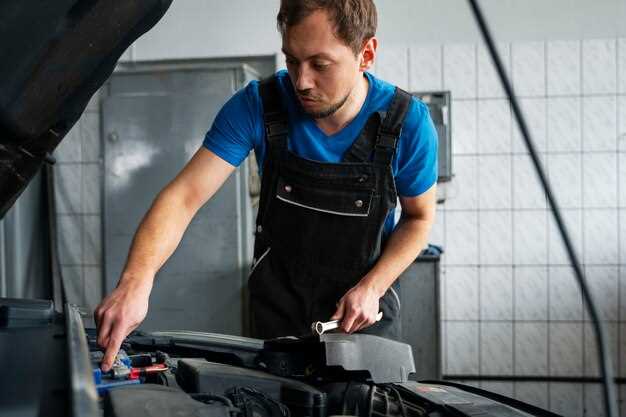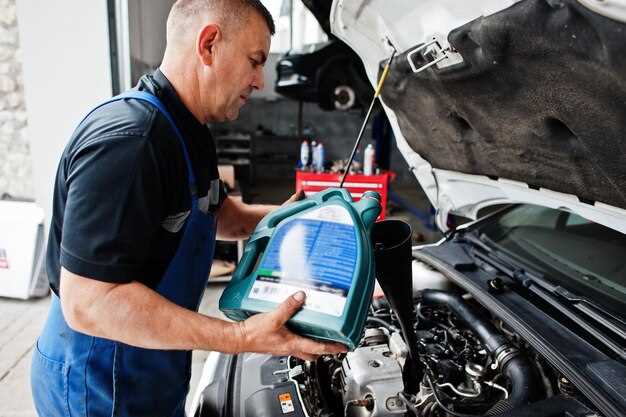
The cooling system is a vital component of your vehicle, preventing engine overheating and ensuring optimal performance. A well-maintained cooling system not only enhances the lifespan of your engine but also improves fuel efficiency and overall driving comfort. Regular checks and preventive measures are crucial to avoid costly repairs and breakdowns, making it essential for every car owner to pay attention to this system.
In this article, we will explore effective tips to help you maintain your car’s cooling system in top shape. From understanding the key components to implementing regular maintenance routines, we will provide you with valuable insights and actions you can take. Whether you’re a seasoned car enthusiast or a new driver, these tips will ensure that your vehicle remains reliable in various driving conditions.
By following these guidelines, you can detect early signs of cooling system issues, prevent overheating, and ultimately protect your investment. Staying proactive will not only enhance your car’s performance but also give you peace of mind on the road.
Regularly Check and Replace Coolant Levels

Your vehicle’s cooling system is essential for maintaining optimal engine temperature. One of the most critical aspects of this system is the coolant. Regularly checking and replacing coolant levels is crucial for preventing overheating and ensuring efficient engine performance.
First and foremost, it is important to check the coolant level frequently, ideally every month or before long trips. Coolant is usually stored in a transparent reservoir, allowing for easy visual inspection. Ensure the level is between the minimum and maximum markers. If it’s low, top it up with the appropriate type of coolant, which can typically be found in the owner’s manual.
Additionally, it’s advisable to check for leaks in the cooling system. Low coolant levels can be a sign of a leak, which may lead to further complications. Inspect hoses, connections, and the radiator for any signs of moisture or corrosion. Addressing leaks early can save you from extensive repairs later.
Over time, coolant can become contaminated or lose its effectiveness due to exposure to heat and chemicals. It’s recommended to replace the coolant as specified in your vehicle’s maintenance schedule, usually every two to five years or after a specific mileage. Flushing the cooling system during replacement removes any buildup of rust, scale, or debris that might impede performance.
Finally, when replacing coolant, always use the type recommended by the manufacturer. There are different types of coolant formulas, including organic acid technology (OAT), traditional green antifreeze, and others. Using the wrong type can lead to corrosion and damage over time.
By regularly checking and replacing coolant levels, you can ensure your vehicle’s cooling system functions effectively, thereby prolonging the life of your engine and enhancing overall performance.
Inspect Hoses and Connections for Leaks
Your car’s cooling system relies heavily on a network of hoses and connections to circulate coolant effectively. Over time, these components can wear down, leading to leaks that jeopardize the overall performance of the system. Regular inspections are essential to prevent overheating and engine damage.
Start by visually examining all the hoses connected to the radiator, water pump, and engine block. Look for any signs of wear, such as cracks, bulges, or fraying. Pay close attention to the connections where hoses meet components. These junctions are common areas for leaks due to the stress of movement and temperature changes.
Perform a thorough check by squeezing the hoses gently. A healthy hose should feel firm but flexible. If you detect any softness or swelling, it’s a sign of deterioration, and replacement is recommended. Additionally, inspect the clamps that secure the hoses; ensure they are tight and free of rust. Loose clamps can lead to coolant escaping under pressure.
After checking for visible signs, consider using a coolant leak detector or UV dye if necessary. These tools help identify leaks that might not be immediately visible. If you observe any coolant accumulation on the ground or under the vehicle, this could be an indicator of a failing hose or connection that needs prompt attention.
For optimal maintenance, schedule these inspections regularly, ideally during oil changes or seasonal check-ups. By being proactive about your hoses and connections, you can safeguard your cooling system and enhance the longevity of your vehicle.
Maintain the Radiator and Prevent Clogs

Regular maintenance of your car’s radiator is crucial for optimal performance and longevity. Start by inspecting the radiator for any visible signs of damage, such as leaks or corrosion. A damaged radiator can significantly impact the cooling system’s efficiency, leading to overheating and potential engine damage.
Ensure that the radiator fins are clean and free from debris. Leaves, dirt, and bugs can accumulate and block airflow, reducing cooling effectiveness. Use a soft brush or compressed air to gently clean the exterior of the radiator. Be cautious to avoid bending the fins, as this can further impede airflow.
Check the coolant level periodically and top it off as necessary. Low coolant levels can lead to overheating and stress on the radiator. Make sure to use the manufacturer’s recommended coolant type to prevent chemical interactions that could lead to clogs or corrosion within the system.
Flushing the radiator every two years helps remove any buildup or sediment that can accumulate over time. This process involves draining the old coolant and replacing it with fresh coolant after thoroughly cleaning the radiator. A clean system promotes better heat exchange and minimizes the risk of clogs.
Inspect hoses connected to the radiator for wear and tear. Look for cracks, bulges, or leaks. Damaged hoses can allow coolant to escape and contribute to system clogs. Replace any compromised hoses promptly to maintain consistent coolant flow.
Lastly, consider adding a radiator stop-leak product if you notice small leaks. While this is a temporary fix, it can prevent clogs from forming due to debris entering the system through cracks. However, be cautious and consult a professional if leaks persist, as permanent repairs may be necessary.





